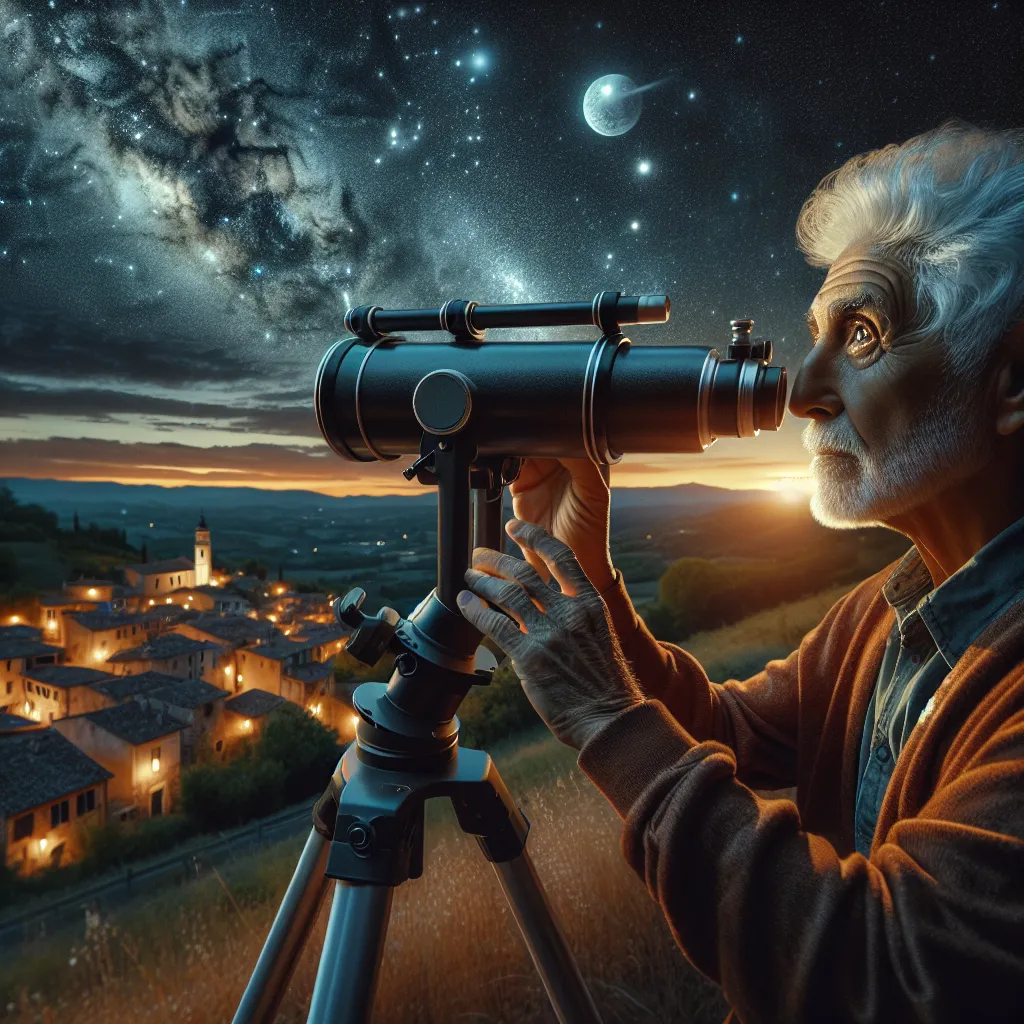
The Celestial Bridge of Juan's Village
Juan had always been fascinated by the vast expanse above him. As a child, he would lie on the grassy knolls outside his small village, staring up at the sky until the stars appeared like tiny pinpricks in the fabric of night. His parents often called him back to reality, but the sky was his first love, a canvas of infinite possibilities that stretched far beyond the confines of his simple life.
As he grew older, Juan's passion for the sky did not wane. He took up jobs that kept him outdoors, from tending to the fields to working as a guide for hikers in the nearby mountains. His favorite moments were the quiet ones at dawn or dusk when the sky painted itself in hues of fiery oranges, soft pinks, and deep purples. He felt a connection to the world in those moments, a sense of belonging to something greater than himself.
Juan's friends and family did not always understand his obsession. They joked about his head being perpetually in the clouds, but Juan didn't mind. He found solace in the ever-changing skyscape, a silent companion that was both constant and ever-evolving.
One evening, as the sun dipped below the horizon, Juan set out for his usual spot on a hill that offered an unobstructed view of the heavens. He brought with him a worn-out blanket and a small, battered telescope he had purchased from a traveling merchant. The telescope was his prized possession, allowing him to get a closer look at the celestial bodies he so admired.
As the first stars began to twinkle in the twilight, Juan set up his telescope and peered through it with childlike anticipation. The moon was a crescent, hanging delicately in the sky like a celestial smile. He adjusted the focus and marveled at the craters and valleys that came into view, feeling as though he could almost reach out and touch them.
Hours passed as Juan moved from constellation to constellation, whispering their names like a prayer: Orion, Cassiopeia, Ursa Major. He felt a kinship with the ancient astronomers who had named these patterns, who had also looked up in wonder and sought to understand the mysteries of the universe.
It was during one of these stargazing sessions that Juan noticed something unusual—a faint light moving steadily across the sky. At first, he thought it was a plane, but it was too high and too silent to be one. With a mixture of excitement and trepidation, he tracked the light with his telescope, realizing that it was a comet, its tail a gossamer streak against the darkness.
Word of Juan's discovery spread quickly through the village, and soon, people were flocking to his hill to catch a glimpse of the celestial visitor. Juan became something of a local hero, the man who brought the sky closer to earth. He shared his telescope and his knowledge freely, teaching the young and old alike about the wonders above.
As the comet made its journey across the sky, night after night, Juan felt a profound sense of fulfillment. He had spent his life looking up, seeking beauty and truth in the heavens, and now he had given his community a reason to look up with him. The comet, a harbinger of change and new beginnings, seemed to mirror Juan's own journey—a solitary man whose love for the sky had brought him closer to the people around him.
When the comet finally vanished from sight, life in the village returned to normal, but something had shifted. Juan continued to watch the sky, but now he was often joined by others—children asking questions about the stars, couples sharing a quiet moment under the vast canopy, old friends simply enjoying the silence together.
Juan had always known that the sky was a source of wonder, but he had discovered that it was also a bridge, connecting him to his fellow humans in a shared experience of awe. And as he grew old, with his hair turning as silver as the Milky Way, Juan took comfort in the knowledge that long after he was gone, the sky would remain, a timeless testament to the beauty of the universe and the human spirit that strives to understand it.